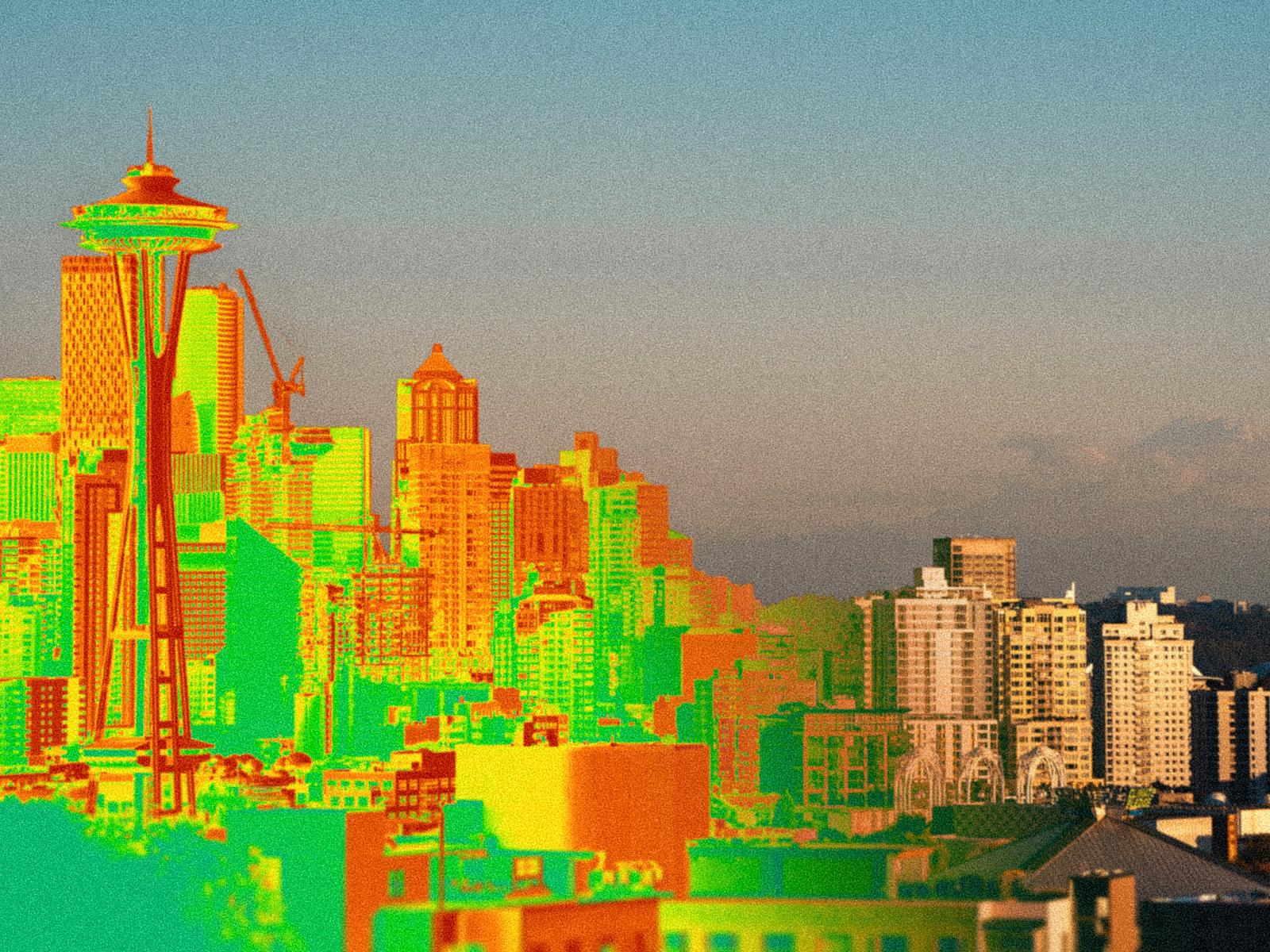Stationary Heat Waves Likely to Increase
Pacific Northwest may face increase in summer heat-dome-like stationary waves

A better understanding of how climate change affects the heat-dome-like stationary wave circulation will help predict events similar to the summer 2021 Pacific Northwest heatwave.
(Composite image by Sara Levine | Pacific Northwest National Laboratory)
The Science
Heat-dome-like stationary waves often lead to extreme heat events, such as the unprecedented summer 2021 heat wave in the Pacific Northwest. However, future changes in summertime stationary waves over the Pacific Northwest and the underlying driving factors remain unclear. Researchers investigated projected changes in the anticyclonic stationary wave circulation over the Pacific Northwest using data from the Coupled Model Intercomparison Project Phase 6 and diagnosed the circulation changes using a stationary wave model. By unraveling the dominant underlying dynamical mechanisms, we gain a better understanding of the cause of the projected changes in the stationary wave circulation and their implications for future heatwave changes.
The Impact
Researchers found a significant 95% increase in summertime stationary wave amplitude over the Pacific Northwest under the high-emission scenario at the end of the 21st century compared to present day. The response is mainly driven by the diabatic heating changes over the northeastern tropical Pacific, which serve as a Rossby wave source for the wave train toward Northwestern America. The pathway for wave propagation is further supported by a northward expanded waveguide over North America. The heat-dome-like stationary wave anomaly is an important dynamical factor behind the increase of the heatwave risk over the region.
Summary
Heatwaves are often associated with heat-dome-like stationary wave circulation in the upper troposphere. Understanding projected changes in the heat-dome-like stationary wave circulation is critical for adapting to and mitigating the impacts of future heatwaves. Here, researchers found that the heat-dome-like stationary wave circulation in the upper troposphere over the Pacific Northwest is projected to double (~95%) in magnitude by the end of the 21st century under the high-emission scenario. Sensitivity experiments with the stationary wave model isolate the diabatic heating from the tropical Pacific as the dominant driver. The heating anomaly related to future sea surface temperature pattern changes over the tropical Pacific leads to a strengthening of the wave source over the tropical northeastern Pacific, triggering enhanced Rossby waves that propagate toward the Pacific Northwest, with the help of a poleward extended waveguide. Similar dynamical processes can be captured by the idealized model forced by tropical diabatic heating, providing a dynamical rationale for confidence in the future increase of heat-dome-like stationary wave circulation over the Pacific Northwest region.
Contact
Ruby L. Leung, Pacific Northwest National Laboratory, ruby.leung@pnnl.gov
Funding
This study is supported by the U.S. Department of Energy (DOE), Office of Science, Biological and Environmental Research program as part of the Regional and Global Model Analysis program area. Pacific Northwest National Laboratory is operated for DOE by Battelle Memorial Institute under contract DE-AC05-76RLO1830. We are grateful to Dr. Mingfang Ting for developing and providing the code of the Stationary Wave Model. We acknowledge Dr. Yanjie Li and Dr. Sen Zhao for developing the ray tracing technique and thank Dr. Koichi Sakaguchi for improving and sharing the tracing code. We also thank the World Climate Research Programme’s Working Group on Coupled Modeling, which is responsible for CMIP6, and the climate modeling groups.
Related Link
Published: February 5, 2024
Chen, Z., Lu, J., Chang, CC. et al. Projected increase in summer heat-dome-like stationary waves over Northwestern North America. npj Clim Atmos Sci 6, 194 (2023). https://doi.org/10.1038/s41612-023-00511-2